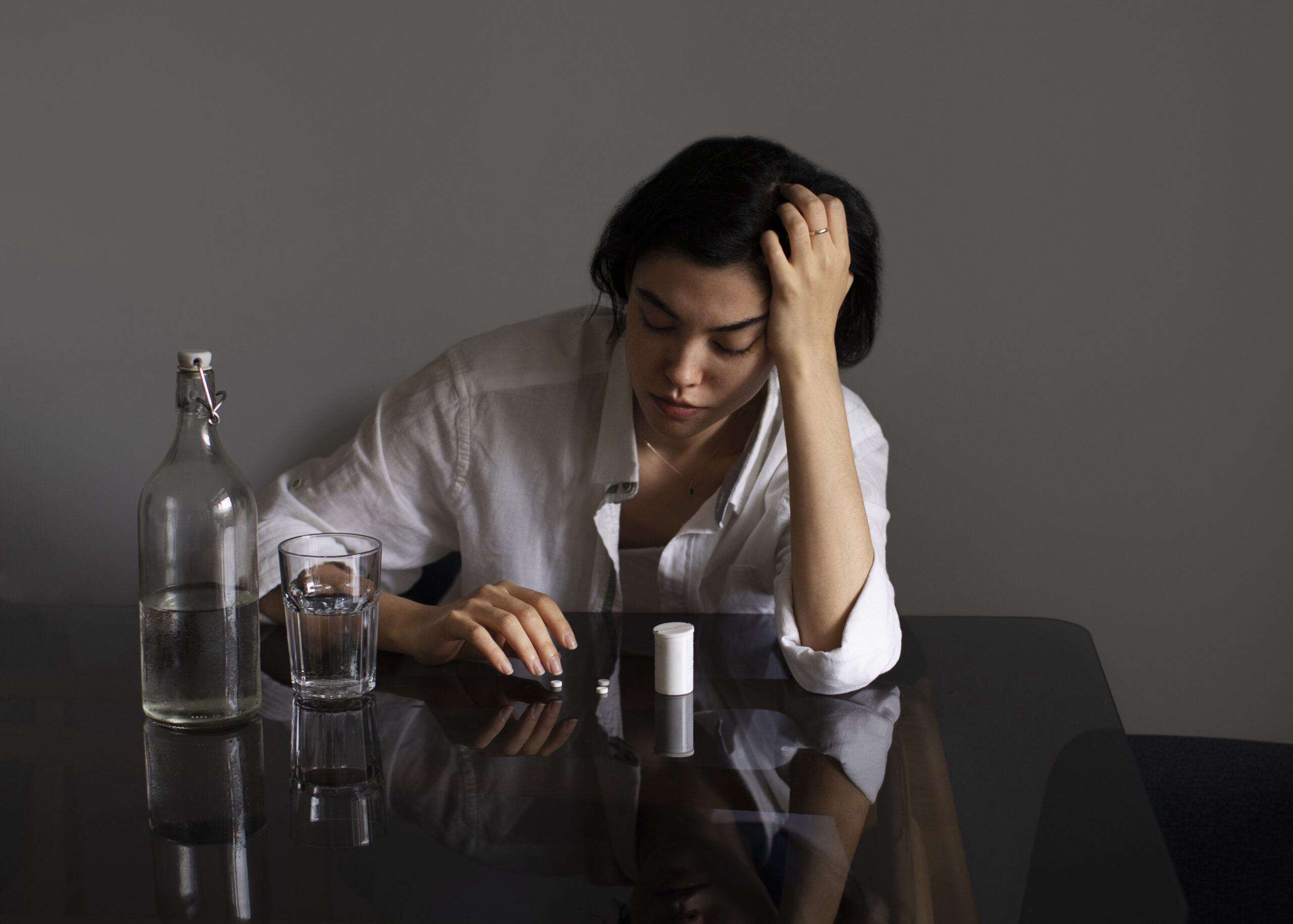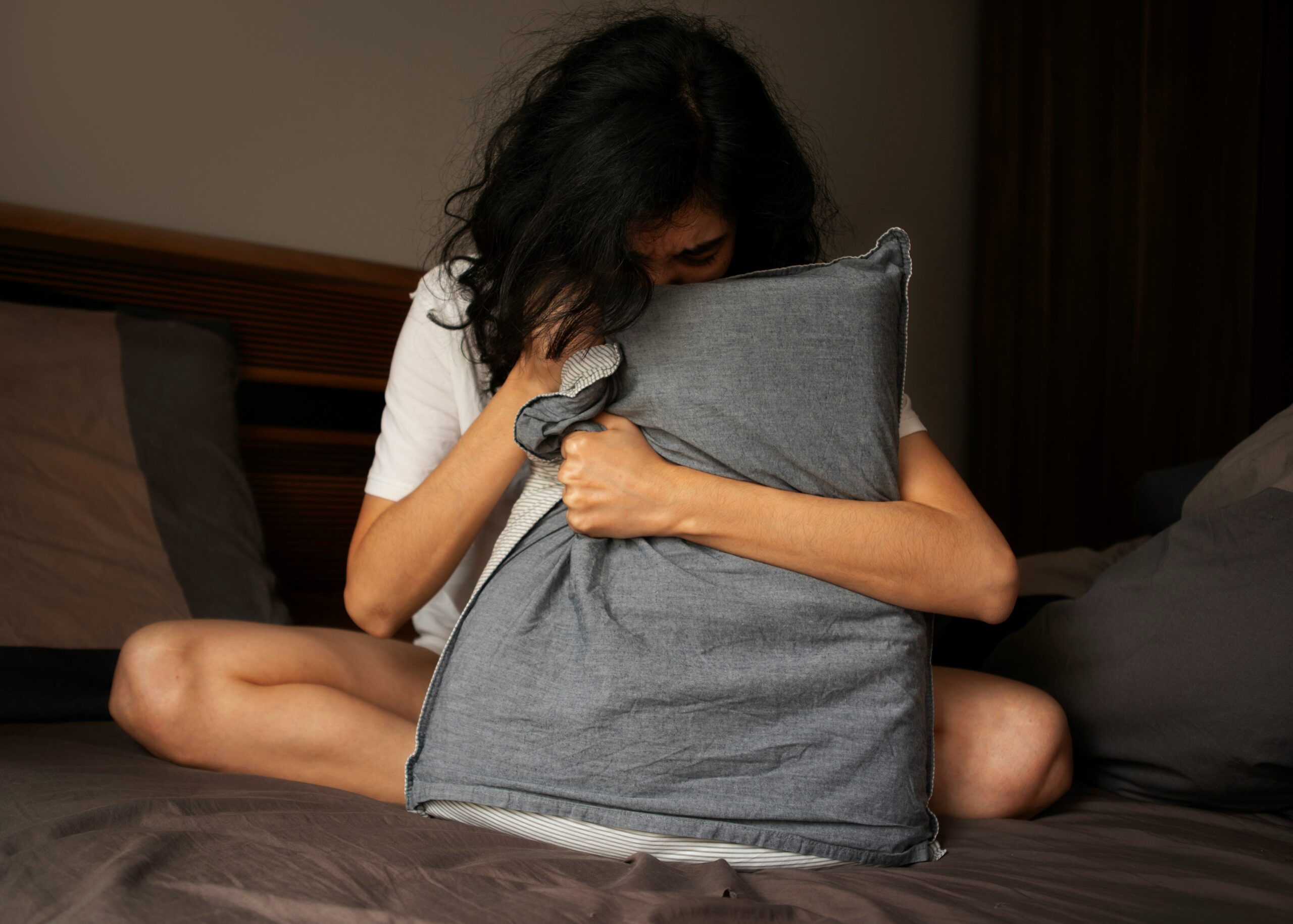Key Takeaways
- Seroquel, known for treating mental health conditions, also aids drug rehabilitation by stabilizing brain chemistry.
- It addresses withdrawal symptoms, dual diagnoses, sleep issues, and cravings, fostering holistic recovery.
- While Seroquel offers mood stabilization and craving reduction, it poses potential side effects like weight gain and withdrawal concerns.
- Administering Seroquel demands careful dosage adjustment and continuous evaluation to optimize effectiveness and safety.
- Seroquel isn’t a standalone solution; it’s one tool among many in a personalized treatment plan, including medications and non-medical interventions like Cognitive Behavioral Therapy (CBT), mindfulness, and peer support groups.
Dealing with the after-effects of the medication shouldn’t feel like a solo battle!

Unlocking the Role of Seroquel in Drug Rehabilitation
When it comes to drug rehabilitation, every patient’s journey is unique, and so is the treatment plan. Seroquel, also known by its generic name quetiapine, has emerged as a significant player in the realm of addiction treatment. It’s not a one-size-fits-all solution, but under the right circumstances, it can be a game-changer. Let’s take a closer look at the role Seroquel plays in helping individuals regain control over their lives.
What Is Seroquel and How Does It Work?
Seroquel is a medication primarily known for treating mental health conditions like schizophrenia, bipolar disorder, and depression. But here’s the twist: it’s also found a place in drug rehabilitation. How? By influencing neurotransmitters in the brain, it helps balance out the chemicals that can be out of whack due to substance abuse.
Think of your brain like a super-busy highway. When everything’s running smoothly, traffic flows without a hitch. But when there’s an accident or construction, things get out of balance. Seroquel steps in like a traffic cop, helping to direct the flow of brain chemicals to reduce symptoms like anxiety or cravings that can derail recovery.
Why Seroquel May Be Used in Drug Rehabilitation Settings
So, why might someone in drug rehab be prescribed Seroquel? There are a few reasons:
- Withdrawal: It can help ease the discomfort of withdrawal symptoms.
- Dual Diagnosis: For those facing addiction and mental health issues at the same time, Seroquel can tackle both challenges.
- Sleep Troubles: It has a sedative effect that can be a blessing for those struggling with sleep during early recovery.
- Craving Control: By balancing brain chemistry, it may help reduce the urge to use substances.
It’s not just about getting through detox; it’s about laying a foundation for long-term recovery. Seroquel might be part of that foundation for some.
The Benefits and Risks of Seroquel Usage
With any medication, it’s essential to weigh the good against the potential downsides. Seroquel is no exception. While it can be an ally in recovery, it’s not without risks. Being informed about both sides of the coin is key to making the best decisions for your health and recovery journey.
Pros: How Seroquel Can Aid in Recovery
Let’s talk about the positives. Seroquel can be a strong ally in the battle against addiction. Here’s how it can help:
- Mood Stabilizer: It’s like a calm in the storm, steadying the mood swings that can make recovery feel like a roller coaster.
- Reduces Cravings: Imagine having a shield against the siren call of substance use; that’s what Seroquel can provide for some.
- Improves Sleep: A good night’s rest is gold in recovery, and Seroquel can help achieve that restorative sleep.
- Addresses Psychiatric Symptoms: For those juggling addiction and mental health issues, it can be a two-birds-one-stone situation.
- Enhances Overall Treatment: By improving mental health, Seroquel can make other rehab efforts more effective.

When used thoughtfully, Seroquel can be a cornerstone in building a new, healthier life free from addiction.
Cons: Understanding the Side Effects and Potential for Misuse
Now, let’s switch gears and look at the downsides. Seroquel isn’t perfect, and being aware of the potential pitfalls is crucial:
- Side Effects: From dizziness to weight gain, Seroquel can bring a bag of unwanted tricks.
- Risk of Misuse: Yes, it’s used in drug rehab, but it can also be misused. It’s a bit of a paradox.
- Withdrawal Concerns: Stopping Seroquel suddenly can be a rocky road, with withdrawal symptoms of its own.
- Not for Everyone: Just like a certain diet doesn’t work for everyone, Seroquel isn’t the right fit for all in recovery.
Being informed means you can manage these risks with your eyes wide open, making choices that are right for you.
Administering Seroquel in a Controlled Environment
Administering Seroquel isn’t a casual affair; it’s a process that demands precision and care. In a controlled environment like a rehab facility, there’s a team making sure it’s done right. They monitor everything from dosage to how you’re feeling, adjusting as needed to make sure the medication is working for you, not against you.
Establishing the Right Dosage and Monitoring
Getting the dosage right is like finding the sweet spot in tuning an instrument – it’s got to be just right. Too little and it’s ineffective; too much and the side effects can overshadow the benefits. Here’s what the process typically looks like:
- Assessment: It starts with a thorough psychiatric evaluation of your specific situation.
- Start Low, Go Slow: Dosage usually begins at the lower end and is increased gradually.
- Regular Check-Ins: Frequent monitoring ensures the medication is doing its job without causing harm.
- Adjustments: Based on your feedback and progress, tweaks to the dosage are common.
Remember, this isn’t a set-it-and-forget-it scenario. It’s a dynamic process that adapts as you move forward in recovery.
Strategies for Preventing Seroquel Misuse and Dependency
Preventing misuse and dependency is a top priority when Seroquel is part of the treatment plan. Here are the strategies employed:
- Educate: Knowledge is power. Understanding the medication reduces the chances of misuse.
- Controlled Access: Seroquel is dispensed in a controlled environment to prevent abuse.
- Support Systems: Counseling and support groups reinforce the proper use of medication.
- Alternative Therapies: Incorporating other treatments can reduce reliance on Seroquel.
- Exit Strategy: Plans for tapering off the medication are often in place from the start.

By sticking to these strategies, the goal is to use Seroquel as a helpful tool, not a crutch, in the journey to recovery.
Evaluating the Evidence: Seroquel’s Effectiveness in Treatment
When considering a medication like Seroquel for drug rehabilitation, it’s not enough to rely on anecdotal evidence. We need to look at the hard facts – the studies and research that give us a clear picture of its effectiveness. So, let’s dive into what the evidence tells us about Seroquel and its role in the recovery process.
Analyzing Clinical Trials and Research Findings
Several clinical trials have put Seroquel to the test. These studies are rigorous, often involving hundreds of participants, and they give us valuable insights. For instance, research has shown that Seroquel can be effective in reducing cravings and easing withdrawal symptoms, which are critical hurdles in the early stages of recovery. But it’s not a silver bullet. The studies also point out that success with Seroquel varies from person to person and that it works best when combined with other forms of therapy and support.
- Reduction in cravings and withdrawal symptoms
- Improved sleep quality and duration
- Stabilization of mood swings associated with detox
- Enhanced focus on therapy and recovery activities
These findings underscore the importance of a tailored approach to treatment – one that considers the individual needs of each patient.
Real-World Outcomes for Patients on Seroquel
Beyond the controlled environment of clinical trials, real-world outcomes can sometimes tell a different story. In the day-to-day life of recovery, patients on Seroquel have reported benefits like better sleep and fewer mood disturbances, which can make a significant difference in their ability to stick with a rehab program. However, there have also been reports of side effects that can complicate the recovery process, such as sedation or weight gain. It’s a reminder that while Seroquel has a place in treatment, it’s not a one-size-fits-all solution.
- Improved adherence to treatment programs
- Decreased rates of relapse in some individuals
- Reports of side effects that require careful management
Ultimately, the real-world effectiveness of Seroquel in drug rehabilitation depends on careful consideration of each patient’s circumstances and ongoing monitoring of their response to the medication.
When Seroquel Is Not the Answer: Alternatives in Treatment
While Seroquel can be an effective part of a comprehensive treatment plan, it’s not the right choice for everyone. Some individuals may not respond well to it, or they may experience side effects that outweigh the benefits. In such cases, it’s important to know that there are alternatives available. Let’s explore some of the other options that can play a role in drug rehabilitation.
Other Medications in Drug Rehabilitation
Drug rehabilitation is not a one-drug-fits-all scenario. When Seroquel isn’t suitable, other medications can step in to fill the gap. These alternatives can help manage withdrawal symptoms, address underlying mental health conditions, or assist in reducing cravings. Here are a few commonly used medications in drug rehab:
- Methadone: Often used to treat opioid addiction, helping to reduce cravings and withdrawal symptoms.
- Buprenorphine: Another medication for opioid addiction that can be used as part of medication-assisted therapy.
- Naltrexone: Helps block the effects of opioids and alcohol, reducing the pleasure associated with use.
- Antidepressants: Can treat co-occurring depression or anxiety, which is common among those in recovery.
- Mood Stabilizers: For those with bipolar disorder or similar conditions, mood stabilizers can be critical.
Each of these medications has its own set of benefits and risks, and, like Seroquel, a healthcare professional should guide their use as part of a comprehensive treatment plan.
Lifestyle and Therapeutic Interventions
Medication is just one piece of the puzzle in drug rehabilitation. A holistic approach includes lifestyle changes and therapeutic interventions that support the journey to sobriety. Let’s look at some non-medication strategies that are equally vital:
- Healthy Eating: Proper nutrition helps heal the body from the inside out.
- Regular Exercise: Physical activity boosts mood and reduces stress.
- Mindfulness and Meditation: These practices promote mental clarity and stress relief.
- Peer Support Groups: Connecting with others in recovery can provide encouragement and accountability.
- Cognitive Behavioral Therapy (CBT): This type of therapy helps reframe negative thought patterns.
- Art and Music Therapy: Creative expression can be a powerful tool for processing emotions and experiences.
- Structured Routine: A consistent daily schedule can provide stability and reduce anxiety.
Integrating these practices into your life can enhance the effectiveness of medications like Seroquel and contribute to a well-rounded recovery experience.
Your Path to Recovery Begins Here
Frequently Asked Questions
1. What Specific Addictions Is Seroquel Used for in Rehabilitation?
Seroquel’s versatility is demonstrated as it is not limited to the treatment of one specific type of addiction. Instead, healthcare professionals prescribe it based on the symptoms it can alleviate. For instance, if someone is grappling with insomnia or anxiety during their recovery from an opioid addiction, they might consider Seroquel. It is also employed for individuals with dual diagnoses, such as those dealing with substance abuse coupled with bipolar disorder or depression. The overarching objective is always to support overall recovery and address the specific challenges each person faces.
2. Can Seroquel Be Used to Treat Alcohol Withdrawal Symptoms?
Yes, Seroquel can be part of treating alcohol withdrawal symptoms. Withdrawal can be tough, with symptoms ranging from anxiety to sleep disturbances. Seroquel has properties that can help calm the storm of withdrawal, making the process more manageable. However, it’s important to note that it’s typically used alongside other treatments and under close medical supervision to ensure safety and effectiveness.
3. How Long Do Patients Typically Take Seroquel During Rehabilitation?
The duration of Seroquel use in rehabilitation varies. It’s tailored to each individual’s needs. Some may only need it for the acute phase of withdrawal, while others might benefit from longer-term use to manage co-occurring mental health conditions. The key is regular assessments to determine the ongoing need for the medication. The aim is to use the lowest effective dose for the shortest necessary duration, always with the goal of reducing reliance on medication as recovery progresses.
4. What Are the Long-Term Effects of Taking Seroquel for Addiction Treatment?
Long-term use of any medication requires careful consideration, and Seroquel is no exception. When it comes to addiction treatment, the long-term effects can vary. Some individuals may experience sustained benefits, such as improved mental health and reduced cravings, which can support ongoing sobriety. However, others might face challenges like weight gain, increased blood sugar, or lipid levels, which can lead to other health concerns.
- Physical Health Monitoring: Regular check-ups are vital to catch any potential health issues early.
- Mental Health Evaluation: Ongoing assessment ensures that Seroquel continues to support mental well-being.
- Dosage Adjustments: As recovery progresses, the need for Seroquel may change, and dosages can be altered accordingly.
- Continued Support: Access to therapy and support groups remains important, even as reliance on medication may decrease.
Collaboratively, the decision to continue Seroquel in the long term should be made by the individual and their healthcare team, always to maximize recovery and minimize potential risks.
5. Is Seroquel Safe for Everyone in Drug Rehabilitation Programs?
Safety is a top priority in drug rehabilitation, and the truth is, Seroquel is not a one-size-fits-all solution. It may be safe and effective for many, but not everyone. Factors like existing health conditions, potential interactions with other medications, and individual responses to the drug all play a role in determining if Seroquel is a safe option.
- Thorough Screening: Before starting Seroquel, a comprehensive evaluation helps identify any potential risks.
- Professional Oversight: Being under the care of experienced professionals ensures that any adverse reactions are quickly addressed.
- Personalized Care: Treatment plans are customized, and if Seroquel isn’t safe for someone, alternatives are explored.
- Informed Consent: Patients are educated about the benefits and risks so they can make informed decisions about their treatment.
For those who can safely use Seroquel, it can be a valuable tool in their recovery arsenal. For others, the focus shifts to finding different, equally effective treatment paths.
Conclusion
Seroquel has a complex role in drug rehabilitation. It’s not just another pill; it’s a medication that can bring balance back to a brain disrupted by substance abuse. Use it wisely, monitor its effects closely, and always prioritize the safety and well-being of those in recovery.
If you or a loved one is considering drug rehabilitation and wondering about the role Seroquel might play in your recovery, we’re here to help. Our team of professionals is ready to provide the highest level of care, tailored to your specific needs. Contact us to learn more about our services and how we can support you in your journey to health and happiness.









